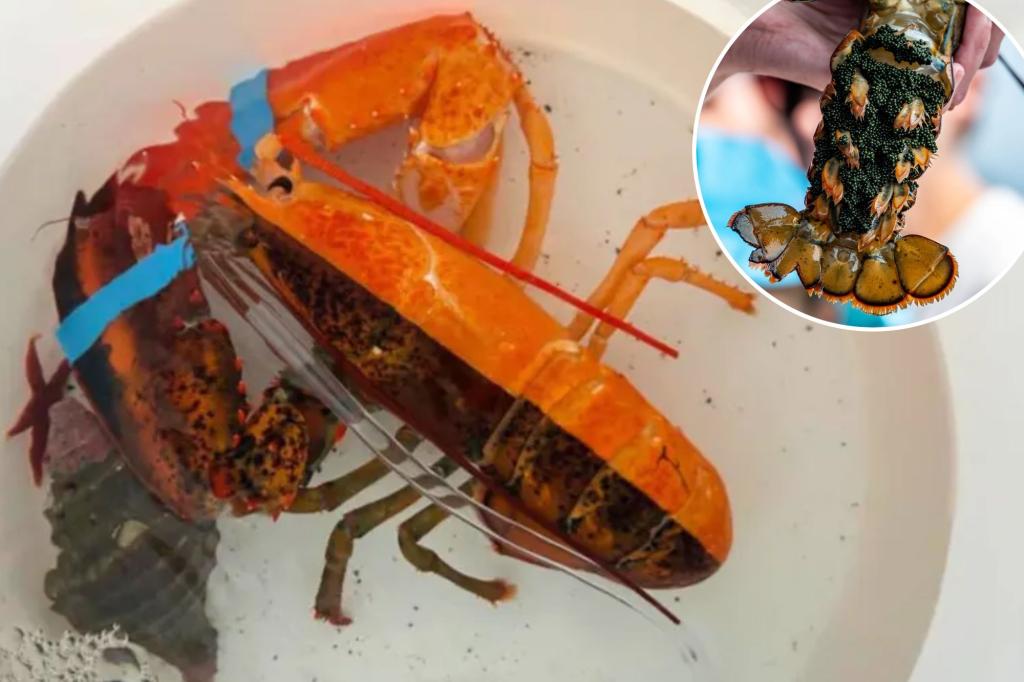Arnold Clawmer, a truly exceptional lobster, found refuge at the Shaw Institute Environmental Education Center just before Christmas. His unique appearance, a striking split coloration of red and mottled brown, makes him a one-in-50-million marvel. This rare phenomenon, known as a chimera, arises from the fusion of two fertilized eggs during the lobster’s early development. This fusion results in a single lobster exhibiting two distinct color patterns, a testament to the intricate interplay of genetics and environmental conditions within the mother lobster. His journey began in a Milbridge, Maine, grocery store, where a compassionate shopper noticed his unusual appearance and facilitated his rescue. Initially, Arnold resided in a touch tank at the Oceanarium in Bar Harbor, allowing him to acclimate to a controlled environment before his transfer to the Shaw Institute in Blue Hill, Maine. Touch tanks serve as interactive educational exhibits, providing visitors with the opportunity to safely interact with marine life while learning about ecosystems and the captivating world beneath the waves.
Arnold’s remarkable story highlights the fascinating world of lobster biology and the extraordinary occurrences that can arise. The formation of chimeras is a delicate process requiring specific genetic combinations and ideal environmental conditions within the mother lobster. This intricate interplay of factors underscores the rarity of split-colored lobsters like Arnold. His unique coloration is not the only distinguishing feature that sets Arnold apart; he also exhibits a rare left-handed crusher claw. Lobsters typically use their right crusher claw to manipulate and consume food, such as fish, while the left cutter claw is employed for tearing and shredding. Arnold’s reversed claw dominance adds another layer of intrigue to his already remarkable profile. This unusual characteristic further cements his status as a truly unique specimen, a testament to the diversity and wonder of the natural world.
Lobsters are opportunistic carnivores, meaning they actively hunt while also readily scavenging for sustenance. Their diet consists of a variety of marine life, including clams, mussels, crabs, urchins, sea stars, and occasionally even other lobsters. They target prey that is smaller and slower than themselves, showcasing their adaptability and resourcefulness in the underwater world. Arnold’s left-handed crusher claw, while unusual, doesn’t hinder his ability to thrive in this environment. He utilizes this dominant claw to effectively grasp and consume his prey, demonstrating the remarkable adaptability of these creatures. His story serves as a reminder of the resilience and resourcefulness of nature, highlighting the unique adaptations that allow individuals to flourish even with unusual traits.
Arnold’s discovery follows another remarkable find in the Maine lobster community. In November 2023, a lobsterman discovered Bowie, a dual-sex lobster with an equally rare one-in-50-million occurrence. Bowie’s unique characteristic, known as gynandromorphy, resulted in a half-blue, half-red coloration, a visual manifestation of the coexistence of both male and female tissues. This condition, like Arnold’s chimerism, is an exceptionally rare phenomenon, further emphasizing the incredible diversity that can exist within a single species. Bowie’s story, like Arnold’s, highlights the remarkable and often unexpected variations that can occur in nature. These rare occurrences provide valuable insights into the complexities of biological development and the fascinating interplay of genetics and environment.
Bowie’s journey took a different path than Arnold’s. After a brief stay at the same Bar Harbor aquarium where Arnold initially resided, Bowie was released back into the wild. This decision allowed Bowie to continue its life in its natural habitat, contributing to the genetic diversity of the lobster population. While both lobsters share the distinction of being exceptionally rare, their stories ultimately diverged. Arnold found a permanent home at the Shaw Institute, where he serves as an ambassador for the wonders of marine life. Bowie, on the other hand, returned to the ocean depths, carrying its unique characteristics back into the wild.
These two remarkable lobsters, Arnold and Bowie, highlight the incredible diversity and unexpected occurrences in the natural world. Their stories, while distinct, both underscore the importance of appreciating the rare and unusual phenomena that can arise in nature. Arnold’s presence at the Shaw Institute offers a unique opportunity for education and awareness about marine life and the fascinating complexities of biological development. Bowie’s return to the ocean reminds us of the vastness and mystery of the natural world, where countless wonders remain to be discovered. These two rare lobsters, with their unique characteristics, serve as a reminder of the incredible diversity and resilience of life on Earth. They offer a glimpse into the intricate workings of nature and the remarkable adaptations that allow individuals to thrive, even with extraordinary traits.

